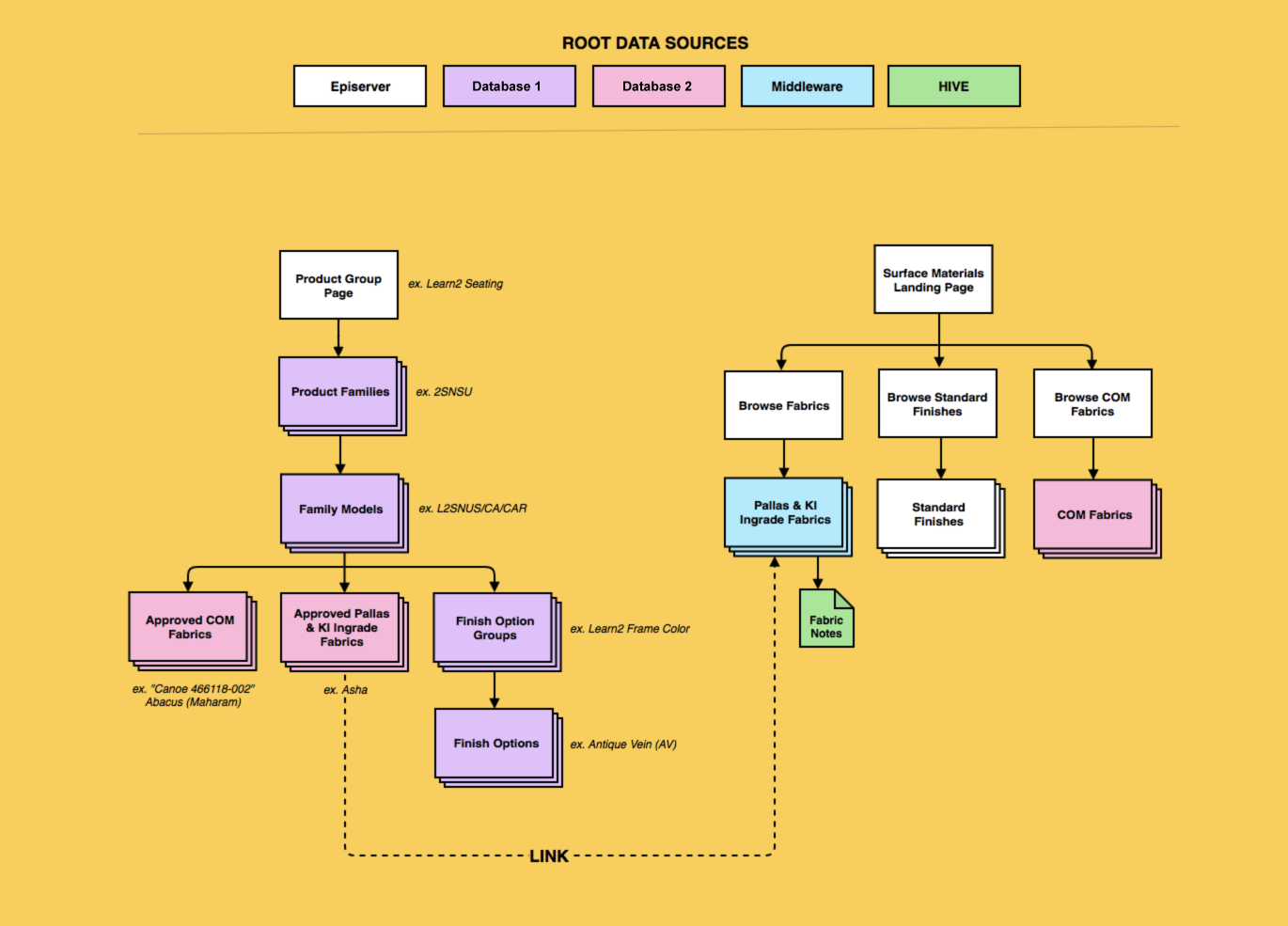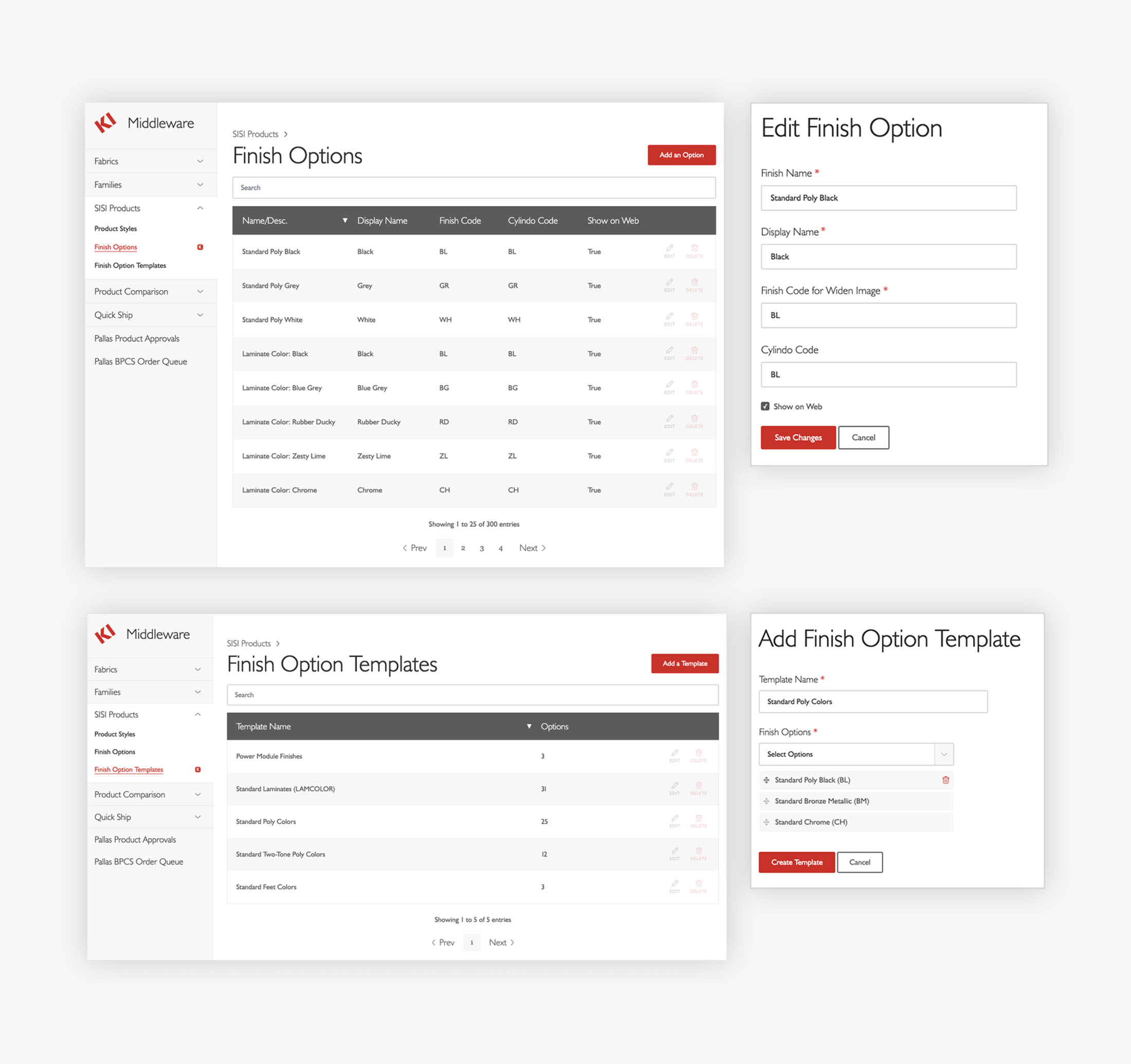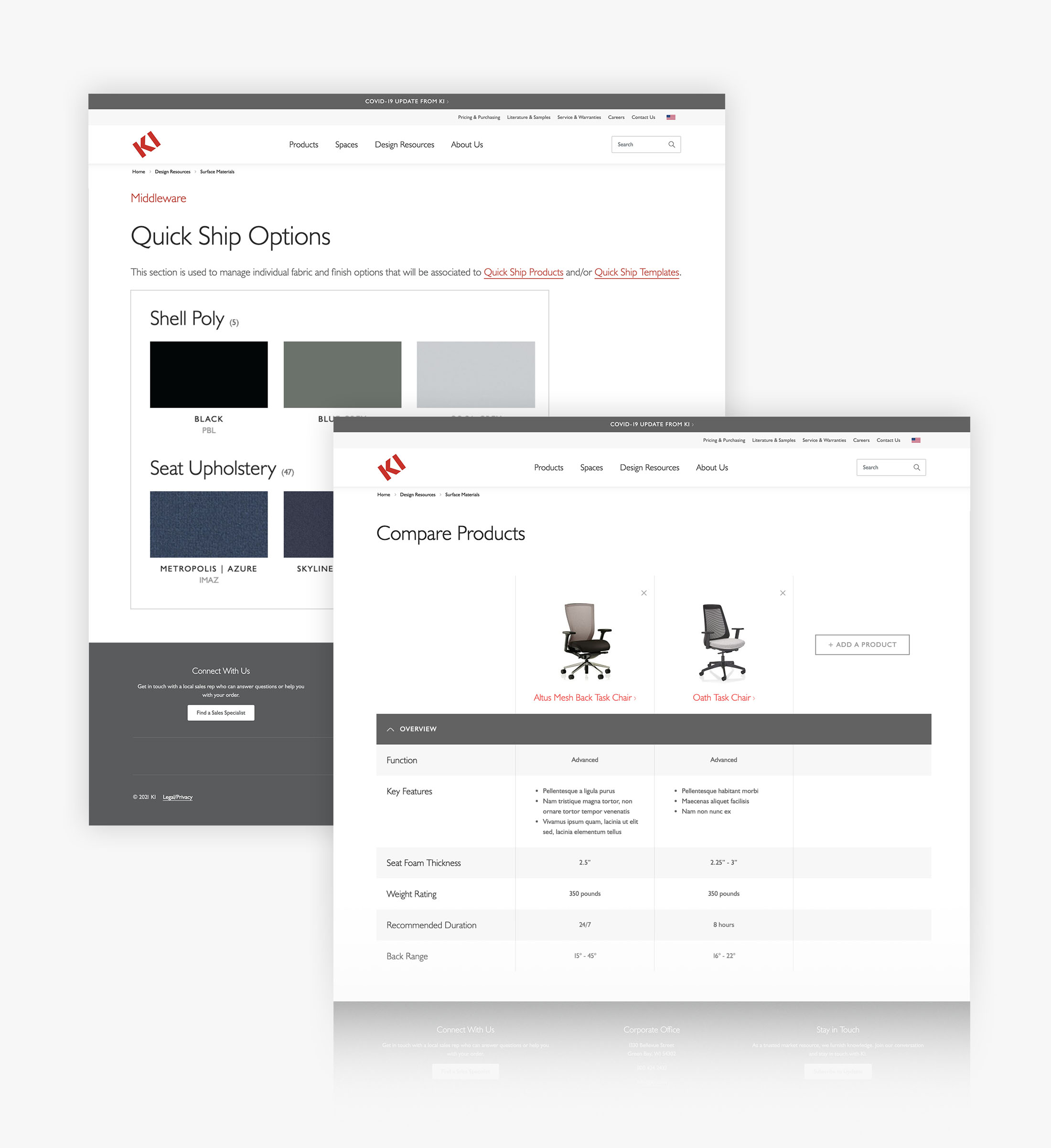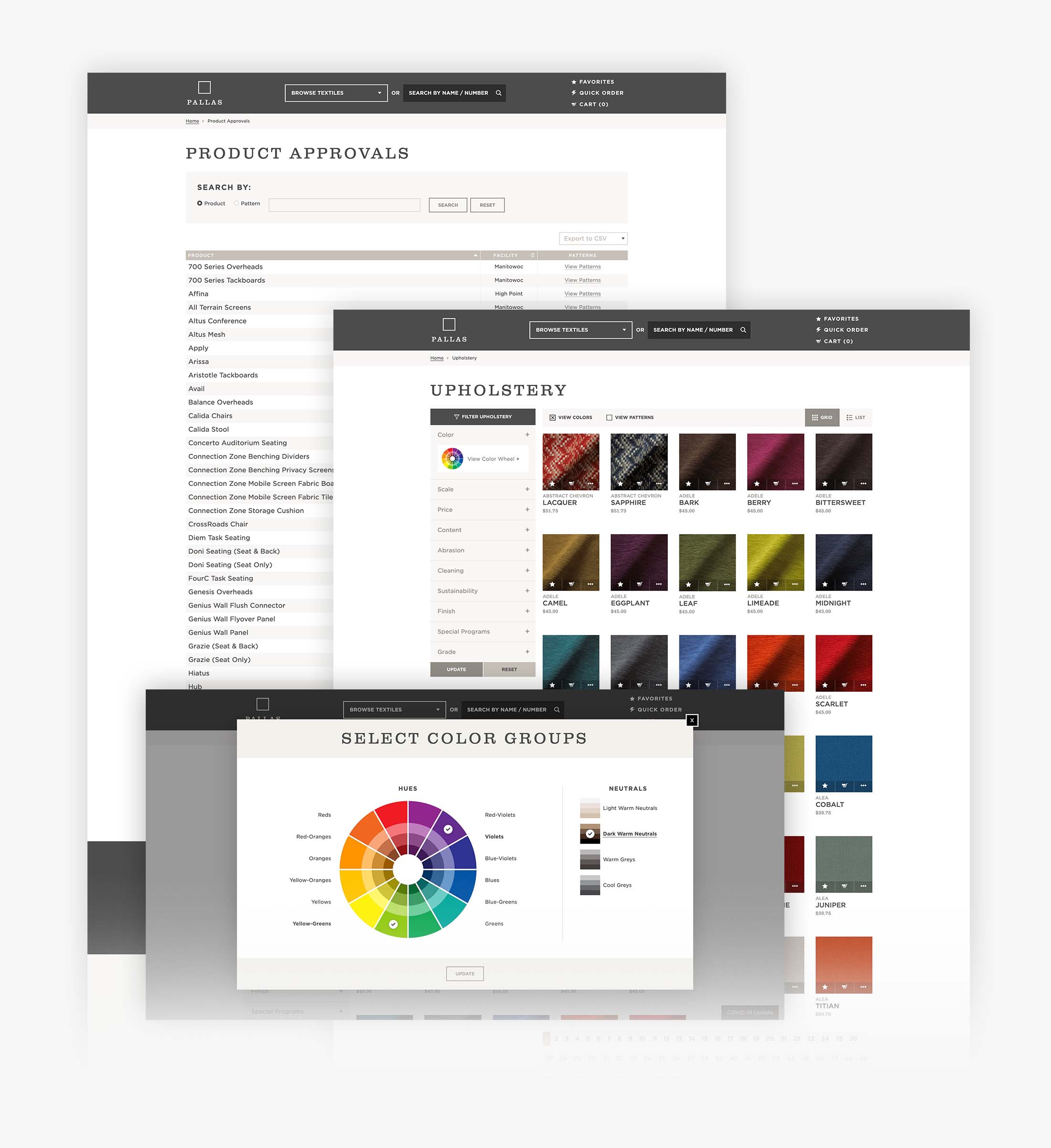.NET Middleware Solution
Developing a .NET middleware solution to integrate all of KI’s internal databases.
Background
A major feature of KI’s website redesign in 2019 was a new Surface Materials Library, which would allow customers to browse and view fabric and finish options for their furniture selections online.
To build that library of options, we needed to address KI’s product data constraints. Legacy systems and data silos meant that complicated queries were required to provide product data on the website.

Considerations
- Product data would need to be pulled in from three separate root sources.
- Product families, family models, fabrics, options, and approvals needed to be consolidated into a single database.
- Data in the middleware would also need to feed to their partner website, pallastextiles.com.
- Outdated web services would need to be replaced with new middleware APIs.
- The ability for KI/Pallas teams to access and export product data from the middleware as needed.
Solution
Diagram architected a custom .NET middleware solution to integrate all of KI’s internal databases, Episerver CMS (Optimizely), Episerver Find (search), and Widen (digital asset management).
The middleware creates associations between products and their approved fabric and finish options. A series of scheduled jobs ensure that product data remains current daily. That data is then fed to both Episerver Find for site search and to their partner website, pallastextiles.com.

Improved Customer Experience
In response to continued customer and sales rep feedback, KI now offers a robust Surface Materials Library featuring:
- Fabrics and Finishes Libraries
- Product Approvals Lookup Tool
- COM (Customer’s Own Material) Approvals Tool
The Surface Materials Library, and other libraries in the new Design Resources section, make up an “interactive toolbox” for designers.



Increased Velocity
The middleware has greatly increased the velocity at which Diagram and KI can deliver new functionality and respond to customer needs. In the 18 months since the new site and middleware were launched, we have also added:
KI.com
1. Product Comparison Tool
Allows users to compare up to four products side-by-side and export the results to PDF.
2. Quick Ship
Middleware is used to manage individual fabric and finish options and templates that are associated with Quick Ship products.
3. New Product Page
Allows users to browse, compare, and export product options directly from the Product Page.


PallasTextiles.com
1. Product Approvals Lookup
Allows users to search Pallas fabrics that are approved for KI products by product, pattern or manufacturing facility.
2. Browse/Search
Improved user experience for browsing and filtering fabrics by additional product dimensions (scale, price, content, abrasion, grade, etc.).
3. Color Wheel
Color group assignment, mapping, and logic managed in middleware.

The coming months will also bring public launches for:
Dynamic Spec Sheet
Allows users to select their desired material options for a product style and export their configurations (along with additional product specs) to PDF.
New and Improved “See It Spec It”
Product configurator for 3D renderings and VR scenes.
Improved Data Hygiene

- Reporting and improved ability to find and remediate data anomalies or duplicates.
- Ability to manage a list of “global exclusions” for any options that need to be hidden from the website, but by default, appear in source data.
- API endpoints can be developed to simplify access to middleware data, resulting in time and financial savings for KI.
- Ability for KI content editors and cross-departmental teams to easily export product data when needed, something that previously required an internal request and weeks of waiting time.